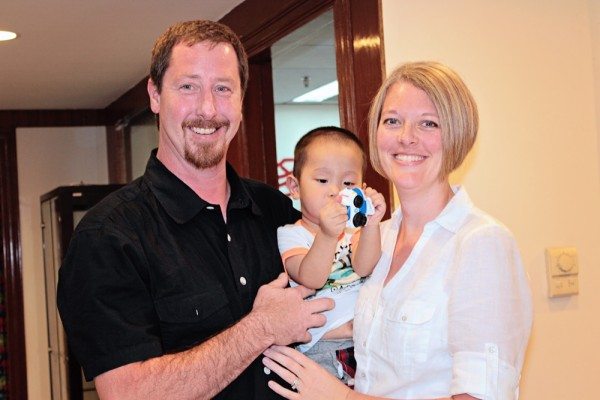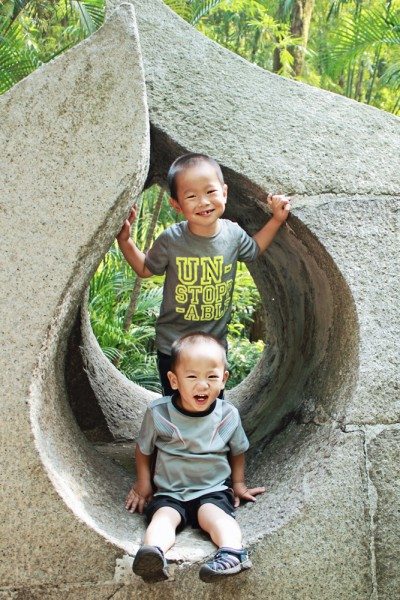Gastrointestinal Issues.
These two words changed our world and lives forever on December 2, 2012. My husband and I had poured over the list of special needs provided by the Waiting Child Program at our adoption agency and chosen those we felt we could handle emotionally, physically, and financially. Gastrointestinal issues was a special need we added late in the home study process. It seemed like a vague addition but one we were willing to research on a case by case basis.
On November 30, 2012 we received a phone call from our family coordinator letting us know that our home study was approved and they would begin looking for a referral match. She asked us to clarify which gastrointestinal issues we would be willing to accept and let her know in the next few days. We didn’t get a chance to have that conversation – six hours after our conference call was complete the phone rang. There was a file available for a two year old boy with gastrointestinal issues. Would we be interested in reviewing the file? We said yes.
Since the file was shared between agencies we had 72 hours to read the file, find an adoption specialist willing to review it and let our agency know our decision. It was late Thursday night when the call came in so the countdown was on. We had to have the acceptance or denial paperwork emailed by Sunday morning. Yikes!
We found an adoption specialist in another state willing to do a review between Friday afternoon and Saturday and then Skype with us on Saturday night. The gastrointestinal issue? Repaired anal atresia, also called imperforate anus.
We knew nothing about this condition or what “repaired” meant. Thankfully the specialist reviewing our file was very thorough and during our two-hour conversation she walked us through the continuum of what repaired anal atresia could look like. We were surprised at the vast differences between children with this diagnosis (no issues to multiple surgeries and daily interventions). After our conversation with her we felt informed enough to make a decision. With what we had learned and our strong belief that this child was meant to be our son, we responded with a resounding YES!
Fast forward 7 months later and we were handed a beautiful little boy who is full of energy, life, laughter and . . . poop!
There weren’t any “surprises” regarding our little boy’s condition while we were in China (everything seemed correct anatomically) except the lack of poop. There was nothing for two days and we were growing concerned. Our first thought was there had been a mistake in the file and that he didn’t poop regularly. We soon found out we had nothing to worry about . . . the kid was a pooping machine! Nonstop. Really. Nonstop the entire time we were in China and right on through the first months of being home. Every diaper. Every day. Lord help us!
Our pediatrician (an adoption specialist at the University of Washington) referred us to the Bowel Management division of Pelvic Medicine at Seattle Children’s for further review and testing. It turns out that our little boy’s corrective surgery wasn’t the worst they had seen but it wasn’t the best either. Our first hurdle (after an MRI, echocardiogram, and x-rays to rule out other potentially related issues) was to go through Bowel Management week. It was determined that a daily enema program would be necessary to facilitate cleanliness for our little munchkin (then 3). This became part of our nightly schedule and routine. Our second hurdle was several months later when he had surgery to remove a stricture (basically scar tissue) that was hindering larger pieces of excrement from being passed. Once his incisions healed we were back to our nightly enema routine.
For two years our son has been “clean” because of his enema program. Enemas are not fun for any of us and they can create scheduling issues but making adjustments where necessary is a small price to pay to help our child live life to the fullest.
Then there is little boy number two. Our second adoption came as a surprise to us; we had not planned on adopting again. My husband was checking his email last December (2014) and saw a message from our former agency advocating for several children who had not been matched. These emails come through all the time and have never caused a stir in our hearts. This email was different. He saw the picture of an adorable little boy and knew he belonged in our family.
When I got home from work he asked me to sit down and he showed me the picture. I had the exact same feeling . . . this is our son. His special need? Repaired anal atresia (and other related issues). Really? Oh my. At the time I remember thinking, Wait, we only have one bathroom in our house! How is this going to work? It seems like a ridiculous thought when I think back but it was where I was at mentally.
We traveled to get our second son early October 2015 and while there weren’t any real surprises with our first son’s condition, we were heartbroken when we saw the result of our second son’s surgery. When it comes to the diagnosis of repaired anal atresia, you are basically in the dark about where your child is at on the anal atresia continuum.
The files are not always accurate, the spectrum of this condition and the broad use of the word “repaired” leave much to the imagination. That said, things did not look good for the newest member of our family. We took one look at our son’s repair and knew we were moving to a completely new level of care once we got home. Interestingly enough, that is what got us past our Lord, help him! and tear filled moments while in China. He is our son and we will do everything necessary and utilize the medical resources at our disposal to improve his quality of life. We cannot wait until he knows what it feels like to have a normal size abdomen and to be able to poop without extreme pain!
I am writing this one week after returning from China. He has had his initial appointment with the pediatrician (the same one our oldest sees) and she has put in referrals for four different departments at Seattle Children’s Hospital. We know this journey will have larger mountains to climb than we have dealt with before but we have experience to draw from and the knowledge that our little on is in good hands.
The label gastrointestinal issues played a large part in how our boys came to be a part of our family. We would love it if they did not have to deal with poop issues on a daily basis (honestly, it would be great if we didn’t have deal with their issues either) but it is a part of their reality that cannot be changed. Instead of the label, we look at our boys and see all of the possibilities the future holds for them now that they have access to the care they need. They are our sons (poop and all) and we love them to forever and back!
– guest post by Robyn



























They are so cute! We are four weeks away from bringing home our own ARM’s son and I know we will have a long road ahead. I wish we could get an update as it has been two years!